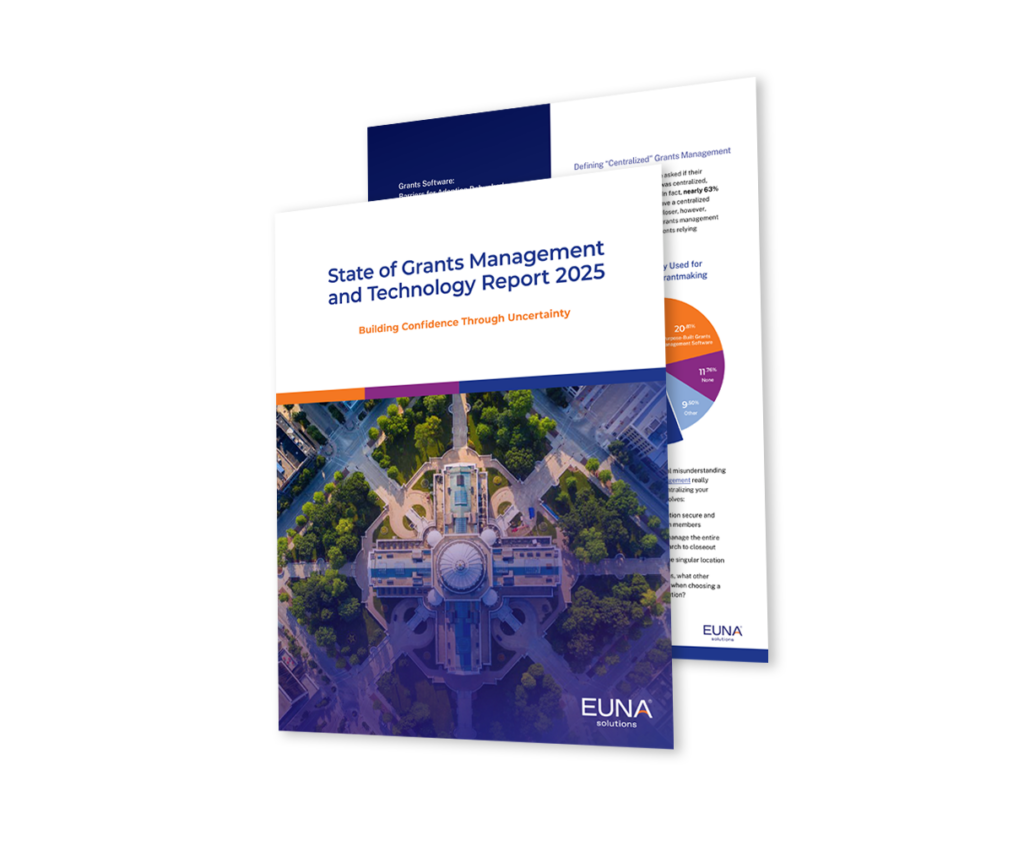Grants management is no small feat. For many local governments, the complex process of pursuing, applying for, and responsibly handing federal funding can be daunting and overwhelming. The stakes are incredibly high: not only is the need to secure grants critical to the survival and success of many organizations, but mismanagement of funds can label you as a risk to future grantors, jeopardizing future funding for community projects and initiatives.
Traditional grants management methods—relying heavily on paper, emails, and spreadsheets—only add further burden to an already challenging task. These outdated practices can lead to inefficiencies, compliance risks, missed opportunities, and more. Below, let’s take a look at five of the biggest challenges when using traditional grants management methods.
1. Ineffective Manual Approaches
Traditional grants management often involves a lot of manual labor. This includes everything from filling out application forms by hand to manually tracking each stage of the grant process. While this might seem manageable on a small scale, it quickly becomes impractical as the number of grants increases.
First, manual approaches are time-consuming. Grant managers often find themselves buried under piles of paperwork, which takes away valuable time that could be spent on more strategic, higher-level work. This is particularly problematic for smaller agencies that typically operate with limited resources.
There’s also the issue of manual data entry, which is always prone to human error. A misplaced decimal or overlooked field on a spreadsheet can derail the entire application process, requiring already-exasperated grants managers to start everything all over again. Even the most minor of mistakes can have significant consequences, including delayed applications, missed deadlines, and jeopardized funding.
And with the lack of automation in manual processes, there’s no efficient way to ensure consistency and accuracy across multiple grant applications. Because each new submission is a fresh start, requiring the same information to be entered repeatedly, it only increases the risk of inconsistency and errors.
2. Fractured Communication
With so many moving parts involved, effective communication is vital for successful grants management. Traditional methods, however, often lead to fractured dialogue among team members, stakeholders, and grantors.
Reliance on emails and phone calls can create a fragmented and disorganized system. Important information can easily get lost in a crowded inbox, leading to missed deadlines and overlooked details. Not only that, but email chains can famously become convoluted, making it difficult to track conversations and important updates.
Secondly, coordinating among multiple stakeholders quickly becomes a logistical nightmare. Grant management involves collaboration between various departments, each playing a critical role. Traditional methods lack a centralized platform for seamless communication, resulting in silos that hinder effective cooperation and efficiency.
The absence of real-time updates also increases the chances of team members working with outdated information. This can lead to redundancy, duplicated efforts, and misaligned priorities, ultimately impacting the overall effectiveness of the grants management process and costing valuable time.
3. Compliance Issues
Compliance is a critical aspect of grants management. Non-compliance with Uniform Guidance regulations–as well as specific grant requirements–can have severe consequences, including the loss of funding and reputational damage. But using traditional grants management methods makes staying compliant difficult.
Federal grants come with a myriad of ever-changing requirements, and staying abreast of the latest updates can be overwhelming. Without the tools necessary to monitor and adapt to these shifting guidelines, governments still using traditional methods are playing a high-risk game that could cost them big.
Beyond that, traditional methods do not provide the necessary checks and balances to ensure compliance at every stage, and the manual tracking measures are always vulnerable to human error. Missing a reporting deadline or failing to adhere to specific regulations can have a devastating effect on current and future funding opportunities.
The lack of standardized processes in traditional methods also make it difficult to establish a consistent approach to compliance. Each grant may have unique requirements, and relying on manual methods increases the risk of overlooking critical measures.
4. Workflow Challenges
Successful grants management thrives on efficient workflows, but traditional methods often introduce challenges that hinder productivity and effectiveness.
Using traditional approaches, each stage of the grant process–from application to reporting–requires manual intervention. This leads to bottlenecks and delays, slowing down the entire workflow and resulting in missed opportunities and delayed outcomes.
Traditional methods also lack visibility into the overall workflow. With a fractured view, grant managers may struggle to track the progress of each grant, leading to uncertainty and inefficiency as they’re unable to identify and address workflow issues promptly.
And finally, coordinating tasks and responsibilities among team members becomes cumbersome with traditional methods. These manual approaches tend to rely on individual efforts rather than a streamlined workflow that promotes collaboration and accountability. This can lead to confusion, duplicated efforts, and missed deadlines.
5. Lackluster Tracking and Reporting
Grantors and other stakeholders need regular, transparent reports on a funded project’s progress and impact. On the grantee’s end, this involves collecting and analyzing data, tracking key performance indicators, and demonstrating achieved outcomes. It’s a lot of work, and unfortunately, traditional methods often fall short.
Because manual approaches require grant managers to compile and analyze this data themselves, mistakes can happen frequently, making it challenging to create accurate and insightful reports. This hampers the ability to provide stakeholders with meaningful information, which could affect much-needed funding in the future.
The Solution: Digital Grants Management
Traditional grants management methods pose significant challenges for both grantors and grantees, hindering the efficiency and effectiveness of the entire process. To overcome these obstacles, it’s crucial to adopt modern solutions that streamline workflows and automate tasks like tracking and reporting.
Euna Grants offers a comprehensive solution that tackles these issues and more, empowering you to save time, improve communication, ensure compliance, streamline workflows, and enhance tracking and reporting capabilities. Don’t let the complexities of traditional grants management hold you back. Book a demo today and experience the benefits of efficient and effective grants management.

